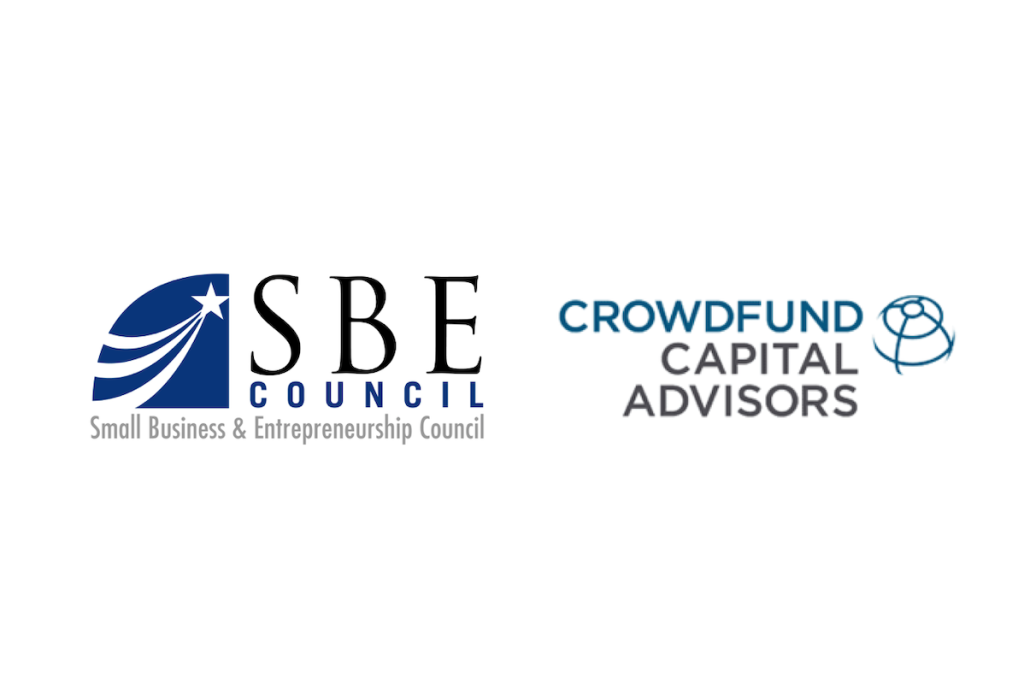Crowdfund Capital Advisors and Small Business & Entrepreneurship Council, two members of the Start Us Up coalition, are championing the creation of a co-investment fund for successful Regulation Crowdfunding campaigns. We spoke with CCA’s Sherwood Neiss and SBE Council’s Karen Kerrigan to discuss how the fund, and crowdfunding in general, can transform the funding landscape for entrepreneurs.
Q: Tell us about the idea for a co-investment fund and what it might look like in the United States.
A: During the Great Recession, we developed the idea for securities-based crowdfunding because we needed to find a way to get capital flowing to America’s job creators. The banks weren’t lending, and other options entrepreneurs were using — like lines of credit and credit cards — disappeared. Since Regulation Crowdfunding went into effect, more than 2,750 companies in almost 1,000 cities across the United States have raised close to $700 million to support their growth and operations.
When COVID hit, something interesting happened. Rather than seeing Regulation Crowdfunding offerings diminish and investors shy away, the opposite happened. From February to July, we saw the number of offerings, investors and capital commitments hit historic highs. This got us thinking. If community investors can help support community businesses with their limited capital, what if we were to multiply the amount of capital by creating a co-investment fund whereby the government would invest alongside the crowd?
So, we looked to see where such a model already exists, and we found it in the United Kingdom with the Future Fund. This is what the Main Street Co-Investment Fund is based on. The fund would invest up to $250,000 per business in a dollar-for-dollar match provided a company were to hit a funding target and explain how they would use the capital.
The best part about this program is that it is turnkey. There is no policy that needs to be created. Right now, the Federal Reserve is sitting on about $598 billion that it was supposed to disperse to Main Street businesses. If the Fed were to just carve out $20 billion into this co-investment fund, it could support 80,000 businesses.
Q: What steps have your organizations taken to advocate for the creation of such a fund?
A: The first phase of our work has focused on reaching out and educating the committees of jurisdiction in the House and Senate about the Main Street Recovery Co-Investment Fund. In addition, we continue to deliver information and communications to key staff within the White House, Securities and Exchange Commission and Treasury about the value of this program to small business recovery, resiliency and entrepreneurship in general.
We continue to conduct various interviews with media, and have hosted a virtual Hill briefing about the fund. In mid-September we released the report “Regulation Crowdfunding by Congressional District: A Report Card,” which provides a comprehensive review of the success of investment crowdfunding. As noted in the report, this method of fundraising is widespread, with more than 90% of congressional districts — that is, 393 House districts — having issuers or small business owners that have utilized investment crowdfunding. In addition, there are more than 700,000 retail investors who have participated in these offerings.
Not surprisingly, the areas of the country that are being hardest hit by the pandemic in terms of business closures — urban districts — have tens of thousands of retail investors. Investment crowdfunding can be leveraged to help these hard-hit areas recover and reinvent themselves, but massive capital is needed. This is where the power of the local crowd can step in.
Q: Expanding access to capital is a key pillar of America’s New Business Plan. What potential do you see for Regulation Crowdfunding to help meet entrepreneurs’ capital needs, especially women, people of color, and those living in rural communities?
A: Before Regulation Crowdfunding came into existence, we testified that it would democratize access to capital, and indeed this method of raising capital has done just that. With more than four years of experience under our belts we can see that Regulation Crowdfunding is working. 80% of the capital is coming from investors within local communities.
Further research we have done shows that women and minority-founders are some of the biggest beneficiaries of Regulation Crowdfunding. This is important as much research has been done about how women and minorities are shut out of the traditional capital markets.
With the decimation of untold numbers of small businesses — perhaps in the millions — by the end of COVID, it is more critical than ever that policymakers focus on solutions that will fuel business creation and growth. By leveraging private capital, the government can play a key role in helping the economy recover from the COVID catastrophe.

